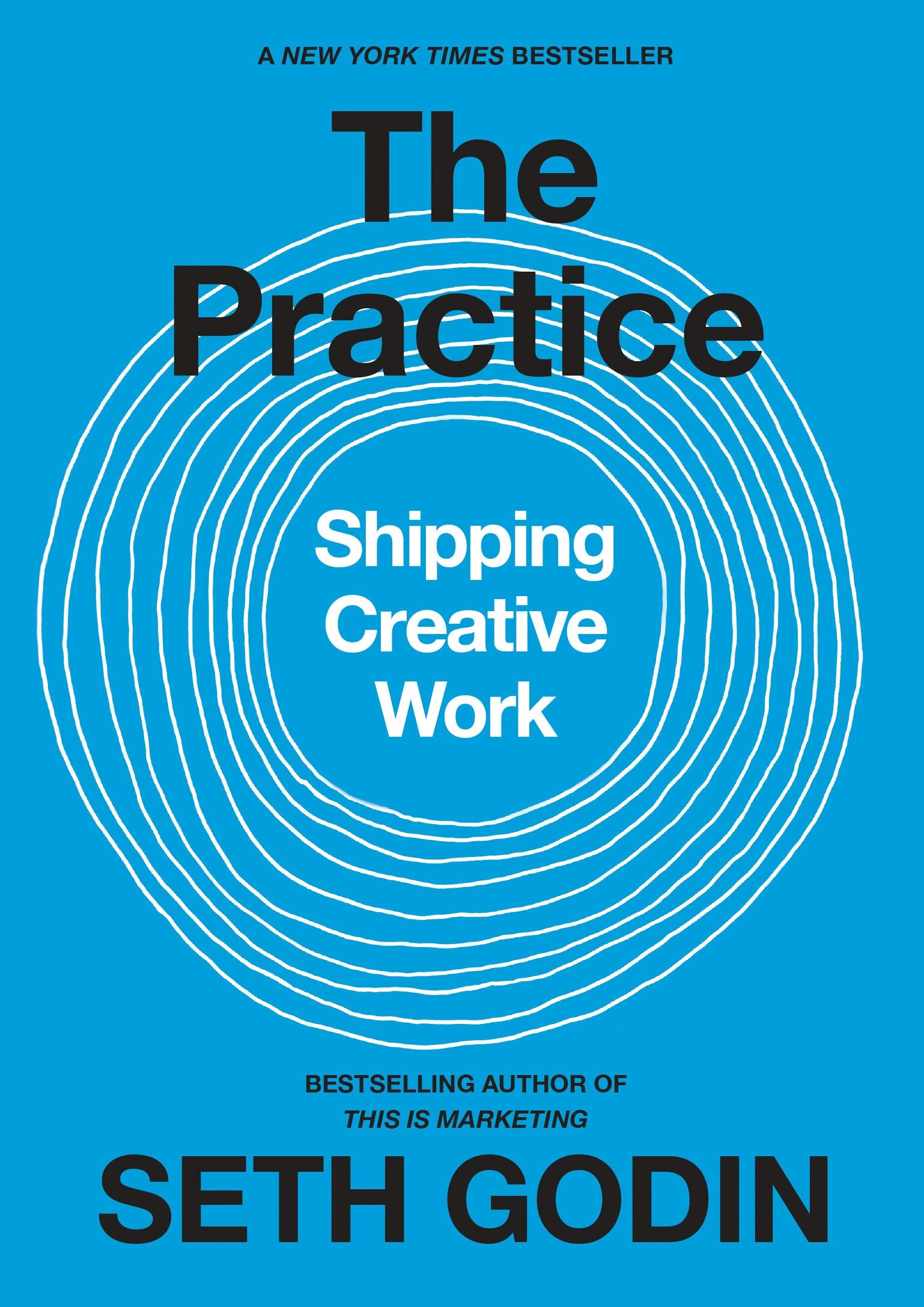The Practice by Seth Godin
Summary
This book is simply a lecture transcribed. 217 bullet points with a heading and detailed explanation of the heading/saying/tip. Godin goes on and on and gives the reader great encouragement, confidence, and courage to pursue their creative work. He also delves into the many roadblocks that creatives will face and offers simple and practical solutions to those problems -mainly changing your attitude. It’s not a technical guide to solve problems, but rather a qualitative analysis of our attitudinal barriers and how we can perhaps overcome them. Teaching someone how to think differently is quite a challenge but if you are a creative who is struggling to finish their work or not sure where to start, this book is sure to help. It’s a keeper for anyone that is creative or has a project they are either yearning to start, or stuck in the middle of, or not sure how to finish.
My key takeaways - taken directly from the inside jacket of the hardcover
Committing to a practice that makes our best better is all we can do:
Skill is not the same as talent
A good process can lead to good outcomes, but it doesn’t guarantee them.
Perfectionism has nothing to do with being perfect.
Hubris is the opposite of trust.
Attitudes are skills.
There’s no such thing as writer’s block.
Professionals produce with intent.
Creativity is an act of leadership.
Leaders are imposters.
All criticism is not the same.
We become creative when we ship the work.
Good taste is a skill.
Passion is a choice.
Creative is a choice.
Avoid certainty.
Pick yourself.
Results are a by-product.
Postpone gratification.
Seek joy.
Embrace generosity.
Ship the work.
Learn from what you ship.
Avoid reassurance.
Dance with fear.
Be paranoid about mediocrity.
Learn new skills.
Create change.
See the world as it is.
Get better clients.
Be the boss of the process.
Trust yourself.
Repeat.
other quotable quotes from godin:
Write until You’re No Longer Afraid to Write
Write more - about your audience, your craft, your challenges. Write about the trade-offs, the industry, and your genre. Write about your dreams and your fears. Write about what’s funny and what’s not. Write to clarify and to challenge yourself. Write on a regular schedule. Writing isn't the same as talking because writing is organized and permanent. Writing puts you on the hook. Don’t you want to be on the hook?
Flow is the result of effort. The muse shows up when we do the work. Not the other way around. Set up your tools, turn off the internet, and go back to work.
Merely do it. Merely do the work without commentary or drama or anger. Focus on the change you seek to make and bring intent to the craft. Simply that. Nothing more or less. If the process is right, the outcome will inevitably follow.
A roundup of Tips and Tricks for Creators
Build streaks. Do the work every single day. Blog daily. Write daily. Ship daily. Show up daily. Find your streak and maintain it.
Talk about your streaks to keep honest.
Seek the smallest viable audience. Make it for someone, not everyone.
Avoid shortcuts. Seek the most direct path instead.
Find and embrace genre.
Seek out desirable difficulty.
Don’t talk about your dreams with people who want to protect you from heartache.
An assertion is generous: Involves making things better. “I see the situation and I’m offering something to improve it.” Find your audience, then share a point of view and an invitation to connect around a new idea.
You can’t design with intent unless you commit to who it’s for and what it’s for. And that leads to your assertion. Often, we begin by simply making an assertion to ourselves. It might be too soon to invite the audience into our studio. But the act of claiming the assertion begins the cycle of better.
I would recommend this book to
If you identify as a creative
You have a project you’d like to start but aren’t sure where to start
You have been procrastinating and are lacking motivation with your creative work
You enjoy a selection of encouraging and thought-provoking ideas to stimulate your life and perhaps help you get out of your domestic drudgery.

